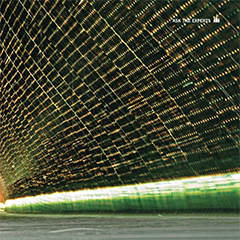Hans-Peter Zimmer, CEO, blade care GmbH and trainer at the blade care Academy, had so much to share last issue that PES felt a follow up interview was necessary. We wanted to find out in more detail about clients’ motivation and some of the specific know-how the Academy offers. Research is also an integral part of improving the services and training offered.
PES: Thanks for coming to talk with us again. In our last interview we learned a lot about blade care’s service on rotor blades and the Academy training programmes. We thought it would be interesting to have more details about what types of training the Academy offers and to have more information on your new reporting and management software. To begin with would you like to tell us which the most popular topics in the seminars for administrators?
Hans-Peter Zimmer: Clients feel much more confident once they know about the blade structure. The administrators and decision makers need to know the importance of visible and invisible damage.
An example is the need to understand the effect of lightning strikes. Some clients are not aware of the fact that plasma arcs can be generated inside the blades. Internal plasma arcs can cause severe damage on the inside, but show only small traces on the blade surface. By understanding the structure of a blade, the severity of the damage and urgency of repair can be assessed. The extent of the damage depends on the specific blade design and its location on the blade.
Another important programme is the access method for repairs. A common practice is rope access – especially offshore but also onshore. Here we note that some clients still have an unclear picture of what can be repaired on a blade and when a blade should be taken to ground.
Some clients are concerned about the quality of repairs performed by rope access technicians. They are often very surprised when we demonstrate the performance of skilled rope technicians. An array of repairs can be carried out by rope technicians insuring high quality– onshore and offshore. Only for very severe structural damage do the blades need to be taken to the ground.
PES: Is it possible to highlight some of the damage that can compromise the turbine performance and safety, which should be repaired immediately? And what is normal wear and tear?
HZ: Because of the different design criteria, I can make only general statements here. For example, damage exposing the laminate on blades, with wooden core material, should be repaired as soon as possible, even when it is only small. The impact is often underestimated. It also depends on where it’s located, the laminate layer is just 2-4mm thick. When the core material is exposed, especially if it’s balsa wood, which is the case for a wide range of older and new blades, the wood absorbs the water like a sponge and is softened over a large area.
The core material provides strength and stiffens the blade. Once this function is no longer there, the blade loses part of its structural integrity. The magnitude of such damage is not visible on the outside. For example, damage to the laminate, only 10mm in diameter, can become a repair area of 1m².
The most significant wear on blades, which has a direct effect on the performance and generated income, is the erosion of the leading-edge. It is difficult to put an exact figure on the power loss. The extent of the affected leading edge section and the degree of erosion, determines the loss of efficiency. For this reason, various sources indicate a production loss of 1% to 10%. Since the lift force generates most of the income and the lift force is predominantly generated at the last 30% to 50% of the blade length so it is easy to understand that compromised aerodynamics due to damaged leading edge will have a large impact on the performance.



























